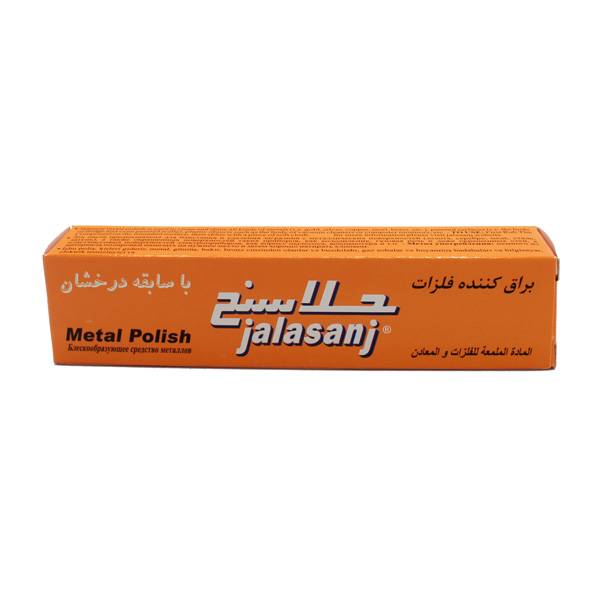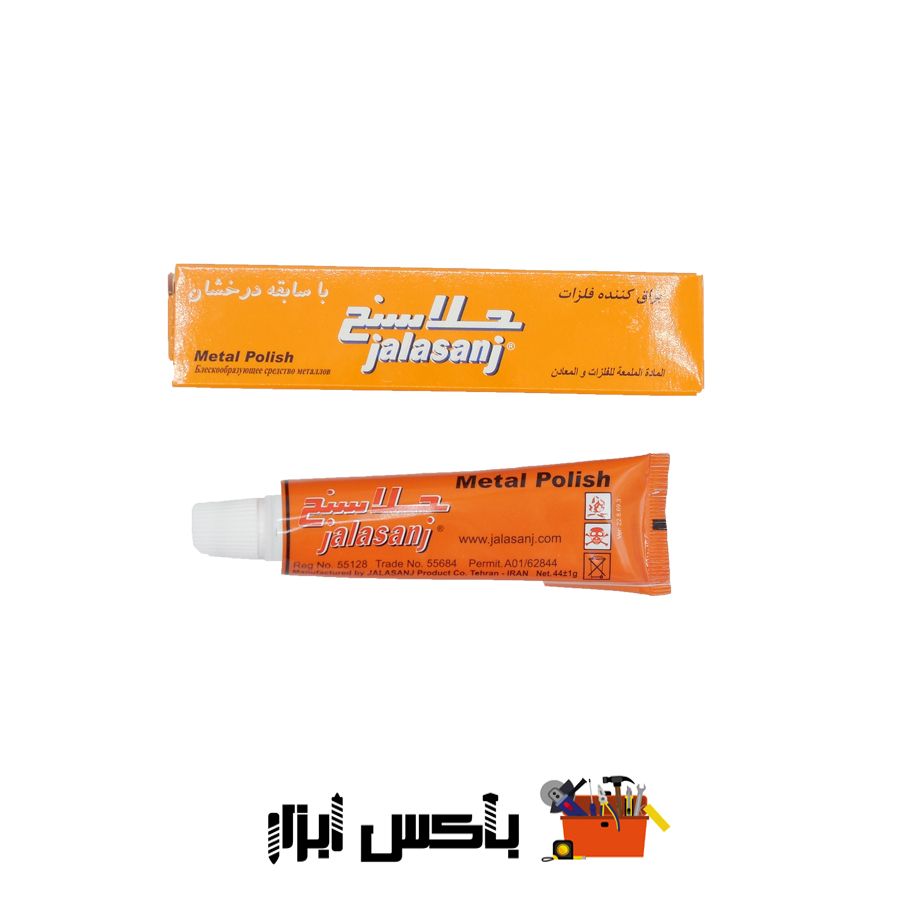
لیستی از عناوین مطالب درج شده در این صفحه
Polishing compounds are essential materials used in various industries to achieve smooth, glossy surfaces. From automotive detailing to metal finishing, these compounds play a critical role in enhancing the appearance and performance of materials. Understanding the different types, applications, and techniques is crucial for achieving optimal results.
Polishing compound is an abrasive material used to remove imperfections from surfaces, such as scratches, oxidation, and swirl marks. It consists of fine abrasive particles suspended in a binder, which allows it to be applied evenly and effectively. The abrasive particles gently wear away the outer layer of the material, revealing a smoother, more refined surface beneath.
Think of it as a very fine sandpaper that’s suspended in a liquid or paste. Instead of using sandpaper directly, which can leave deep scratches if used improperly, polishing compound offers a controlled and gentle abrasion. The binder ensures the abrasive particles are evenly distributed and lubricated, reducing the risk of damaging the surface.
Polishing compounds come in various types, each designed for specific applications and materials:
It's crucial to select the right compound for the job. Using a cutting compound on a surface that only requires polishing can cause unnecessary damage. Conversely, using a finishing compound on a heavily scratched surface won’t yield satisfactory results. Understanding the distinctions between these types is the first step towards achieving a professional-grade finish. To gain further insights, consider exploring سنباده رولی via تهران پولیش.
The abrasiveness of a polishing compound is measured by the size of the abrasive particles it contains. Larger particles are more abrasive and are used for cutting, while smaller particles are less abrasive and are used for polishing and finishing.
To quantify this, manufacturers often use a grading system. For instance, compounds may be labeled with numbers or color codes to indicate their abrasiveness. A high number typically indicates a finer, less abrasive compound, while a lower number indicates a more aggressive cutting compound. It's essential to understand these ratings to choose the appropriate compound for your specific needs. If you're working with delicate materials, opting for a finer compound is generally the safest route. For expert advice on finishing techniques, visit پولیش تهران for more information.
Common ingredients in polishing compounds include:
The specific combination of these ingredients can vary widely depending on the intended use of the compound. For instance, a compound designed for polishing stainless steel might contain a higher concentration of aluminum oxide, while a compound for polishing paint might include more sophisticated additives to protect the finish. Understanding the role of each ingredient can help you make informed choices when selecting a polishing compound.
Polishing compounds are used in a wide range of applications, including:
The versatility of polishing compounds makes them indispensable in many industries. In automotive detailing, they are used to restore the appearance of vehicles, removing imperfections and leaving a showroom-worthy shine. In metal finishing, they are used to create a smooth, reflective surface on everything from architectural elements to industrial components. The key is to choose the right compound and technique for the specific application.

To use polishing compound effectively, follow these steps:
The success of the polishing process hinges on proper technique. It's crucial to use the right amount of compound, avoid excessive pressure, and maintain a consistent speed and pattern. Overlapping strokes ensure that the entire surface is evenly treated, while regular inspection allows you to identify and address any remaining imperfections. Remember, patience is key. Polishing is a process of incremental improvement, and it often takes multiple passes to achieve the desired results.
Various tools can be used to apply polishing compounds, including:
The choice of tool depends on the size and complexity of the surface, as well as your level of experience. Manual polishing is suitable for small areas or intricate details, while power tools are more efficient for larger surfaces. Rotary polishers offer the most aggressive cutting power, but they require careful handling to avoid damaging the surface. Dual-action polishers are more forgiving, making them a popular choice for beginners. Regardless of the tool you choose, it's essential to use high-quality pads and cloths to avoid introducing new scratches or imperfections.

When using polishing compounds, it's important to take the following safety precautions:
Safety should always be a top priority when working with polishing compounds. Many compounds contain chemicals that can be harmful if inhaled or come into contact with skin or eyes. Protective gear, such as gloves and safety glasses, can help prevent these exposures. Working in a well-ventilated area is essential to minimize the inhalation of fumes. Additionally, it's crucial to store compounds properly to prevent accidents or misuse. By following these safety precautions, you can protect yourself and others from potential hazards.
Choosing the right polishing compound depends on several factors, including:
Selecting the appropriate compound is essential for achieving the desired results without causing damage to the surface. Consider the material you're working with, the severity of the imperfections, and the level of gloss you want to achieve. If you're unsure, it's always best to start with a less abrasive compound and gradually increase the abrasiveness as needed. Experimentation and careful observation are key to finding the right combination of compound and technique for each project.

Proper storage of polishing compounds is essential to maintain their effectiveness and prevent degradation. Follow these guidelines:
Proper storage can significantly extend the shelf life of polishing compounds. Sealing containers prevents the compound from drying out or becoming contaminated by dust, dirt, or other debris. Storing compounds in a cool, dry place helps prevent spoilage and maintain their consistency. Avoiding direct sunlight protects the compounds from UV damage, which can break down the active ingredients and reduce their effectiveness. By following these storage guidelines, you can ensure that your polishing compounds remain in optimal condition for future use.
Common mistakes to avoid when using polishing compounds include:
Avoiding these common mistakes can prevent damage to the surface and improve the overall results of the polishing process. Applying too much compound can lead to buildup, which can be difficult to remove and may even cause new scratches. Applying too much pressure can overheat the surface and damage the finish. Using the wrong compound for the material can result in ineffective polishing or even damage to the surface. Finally, failing to clean the surface properly can introduce contaminants that can scratch or mar the finish. By being mindful of these common mistakes, you can ensure a smoother and more effective polishing experience. Also be mindful of the پرداخت کاری برای اطلاع بیشتر در این ضمینه میتوانید به وبسایتهای تهران پولیش و پولیش تهران مراجعه کنید.
If you encounter problems during the polishing process, consider the following troubleshooting tips:
Troubleshooting is an essential part of the polishing process. Swirl marks and holograms are common problems that can be caused by using too abrasive of a compound or applying too much pressure. Adjusting the angle and pressure of the polishing tool can help minimize these issues. An uneven finish can be caused by inconsistent pressure or incomplete coverage. Applying consistent pressure and overlapping strokes can help ensure a uniform finish. If the compound dries out during the polishing process, adding a small amount of water or mineral spirits can help restore its consistency.

Advanced polishing techniques can help you achieve professional-grade results:
Mastering advanced techniques can elevate your polishing skills to the next level. Wet sanding is a technique that involves using sandpaper with water to remove deep scratches before polishing. This can significantly improve the overall quality of the finish, especially on surfaces with severe imperfections. Compounding and polishing involves using a combination of cutting and polishing compounds to progressively refine the surface. This technique is ideal for achieving a flawless finish on automotive paint and other high-value materials. Applying a protective ceramic coating after polishing can help maintain the shine and protect the surface from future damage.
When using polishing compounds, consider the following environmental factors:
Environmental responsibility is increasingly important in all aspects of manufacturing and detailing. Disposing of waste properly helps prevent contamination of soil and water. Using eco-friendly compounds reduces exposure to harmful chemicals and minimizes the environmental impact of the polishing process. Minimizing waste helps conserve resources and reduce the amount of material that ends up in landfills.
Polishing compounds can be cost-effective solutions for maintaining and restoring surfaces. Consider the following:
Investing in polishing compounds and tools can provide long-term cost savings. Polishing can help extend the life of materials by removing imperfections and protecting against corrosion, which can reduce the need for replacements. Polishing can also enhance the appearance of materials, increasing their value and making them more attractive to customers.
Case studies can provide valuable insights into the effectiveness of polishing compounds in real-world applications.
Examining these case studies can provide a deeper understanding of the benefits and challenges of using polishing compounds in various industries. They can also offer practical tips and techniques for achieving optimal results.
The future of polishing compounds is likely to be shaped by several key trends:
These trends reflect a growing emphasis on sustainability, innovation, and efficiency in the finishing industry. Eco-friendly formulations are becoming increasingly popular as consumers and businesses seek to minimize their environmental impact. Advanced materials are driving the development of new compounds that can effectively polish surfaces without causing damage. Automation is streamlining the polishing process, reducing labor costs and improving consistency.
Polishing compounds are versatile tools that can be used to enhance the appearance and performance of various materials. By understanding the different types, applications, and techniques, you can achieve professional-grade results and extend the life of your materials. Always remember to prioritize safety and environmental responsibility when using polishing compounds. Further enhance your understanding by researching تهران پولیش and پولیش تهران to master پرداخت کاری



